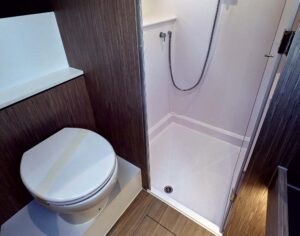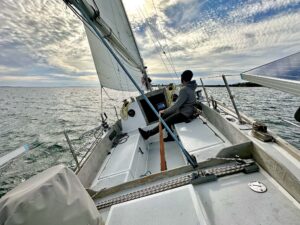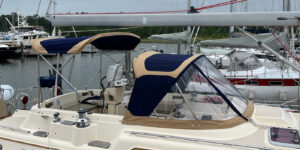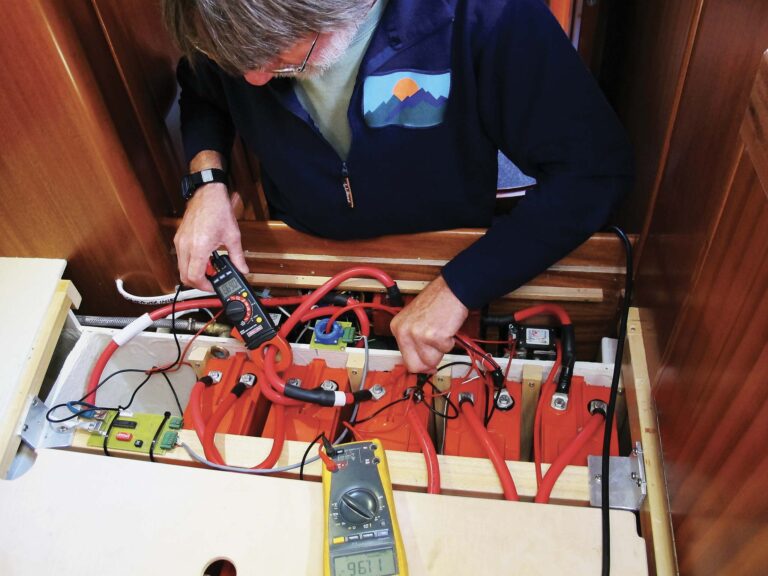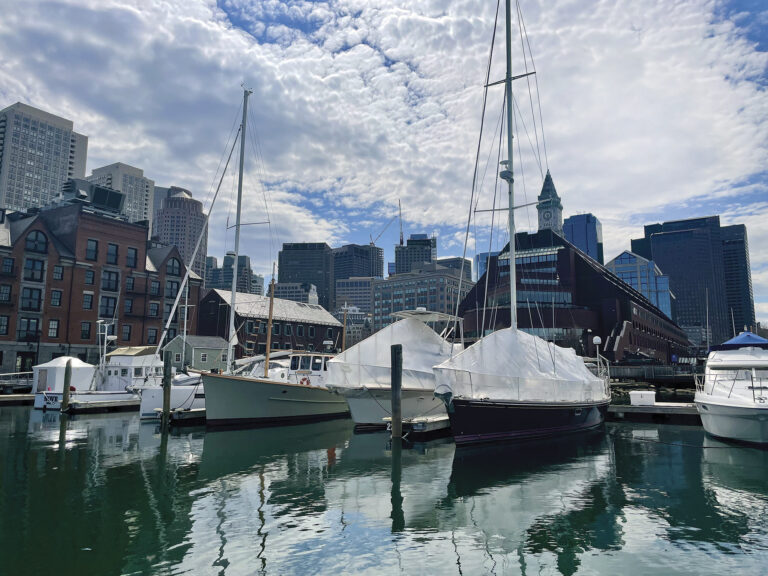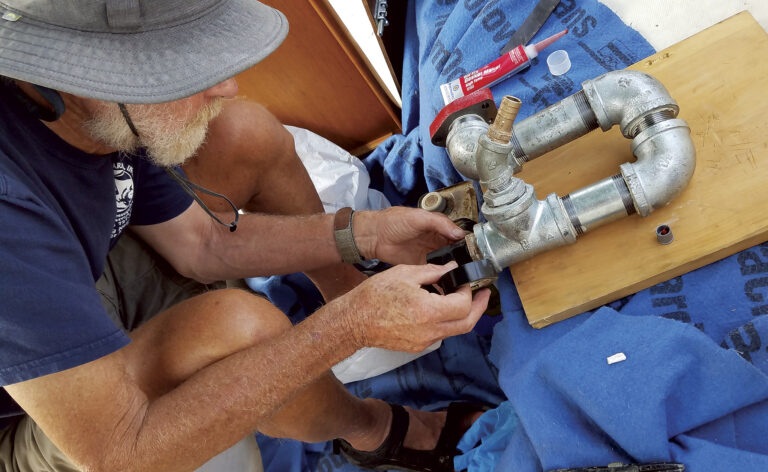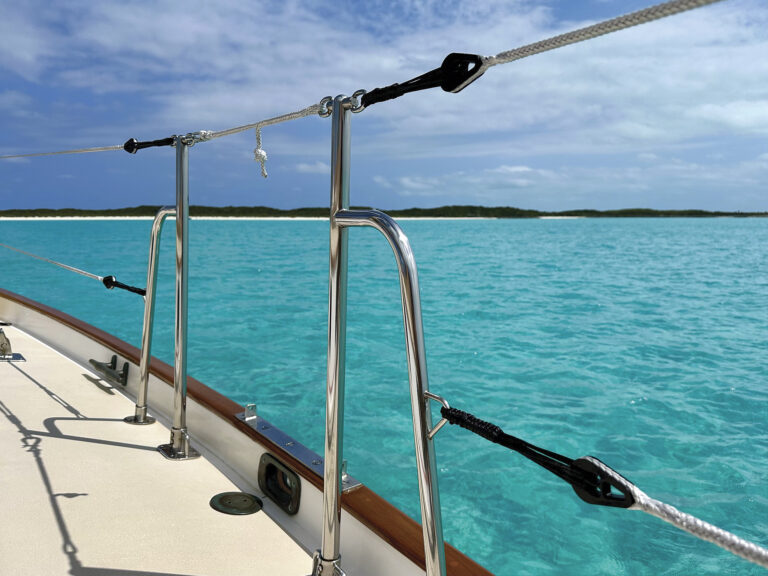There are any number of reasons for marking or remarking the waterline on your boat—perhaps the boat is new, or it’s just been repainted. Or maybe you’ve loaded it up with so much stuff that the original marks are now 3 inches under water. Whatever the reason, re-marking the waterline fills many sailors with dread. Get it right, and the resulting perfect boottop between contrasting bottom paint and the hull will be stunning. Get it wrong, and your shaky paint job will stick out like the proverbial sore thumb.
The boat needs to be out of the water for waterline work. The boat in this example is the BoatWorks dinghy (Summer 05/Fall 05), but the principles apply to any boat. Set the boat on the ground or on its trailer, and chock it well with wood blocks or jackstands. Next, use a spirit level to make sure that the boat is level athwartships—from side to side. Place the level across the cockpit seats or on the cockpit sole. Level the boat by raising the jackstands on one side of the boat and lowering them on the other side. If you’re using wood blocks, you’ll have a bit more work to do. Use thin wedges to level the boat, and tap them in gently to avoid damaging the laminate. Do this a little at a time, and constantly check the bubble on the level. Stop when it sits between the marks on the vial.
Getting the boat to sit level end to end is a bit more complicated. If your boat is new, the waterline should be marked on the designer’s drawings. If your boat is older and these drawings are not available, contact the owners’ association or the designer. If this doesn’t work, take the measurements from a similar boat or make a best guess. If the boat has been in the water for even a few days, there should be some marks on the hull you can refer to. With a wax crayon, make a mark on the stern at the waterline and make another at the bow.
When the boat is aligned athwartships, set up the laser tripod about 15 abeam of midships. The exact spot is not critical providing the laser beam can see the whole side of the boat (if you can see it, so can the laser beam). Turn on the laser and adjust the height of the beam until it touches the marks you made at the bow and the stern. If it touches the mark on the bow but the stern is too high, lower the jackstands at the stern or raise those at the bow—vice versa if the stern is low. Double-check the spirit level in the cockpit to make sure you’re not tilting the boat.
When everything lines up, you’re ready to start taping in the waterline. Start at one end of the boat and work to the other, keeping the tape continuous. Fine-line masking tape is ideal for this because it has some stretch and conforms very well to hull shape, especially if the hull has a lot of reverse turns. Since the boat is already level, all you have to do for the second side is to set the level at the correct height and mark the stern with a piece of tape or transpose the wax crayon mark. Adjust the height of the tripod until the red laser line just kisses this transposed mark, and you’re ready to tape in the waterline.
The Black & Decker laser (BDL 300S) I used came with an adjustableheight tripod that made it easy to raise and lower the beam and get it perfectly aligned, but almost any make of rotating level will work. Many laser units that do not include a tripod do have a 1/4in bushing in the base. This is the standard thread size for a camera tripod, which means you can use that instead.
Top Tip
When you look at a boottop from waterline level, the width should appear constant. Simply measuring up or down from the taped line will give an incorrect reading and a disappointing result. Because of the curvature of the hull, the width varies slightly along the length of the hull. You can solve this problem by marking the first line and then either raising or dropping the laser by the required amount when you remark the second line.


